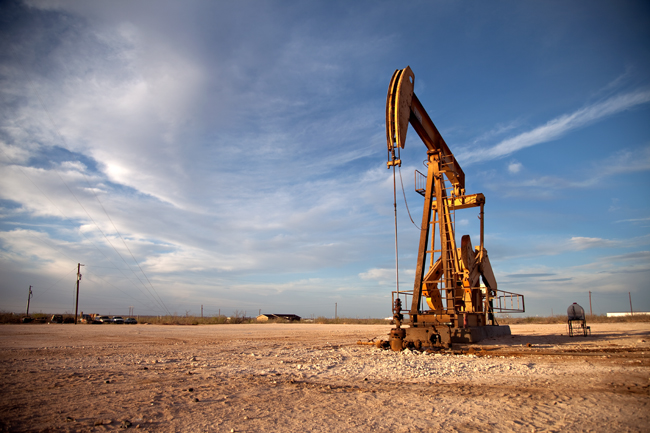Recently, Environment Texas published a letter to University of Texas System Chancellor William H. McRaven from UT faculty and staff that outlined concerns about the release of methane emissions on the Permanent University Fund lands. The letter was also published as a paid advertisement in The Daily Texan.
Chancellor McRaven takes these concerns very seriously. In fact, he first received the letter in January and responded with detailed information about activities on PUF Lands, the mission of the University Lands organization and the significant work being done to reduce methane emissions.
University Lands has the fiduciary duty to steward the surface and mineral interests of 2.1 million acres of land in West Texas for the benefit of the University of Texas and Texas A&M Systems. Environmental stewardship is a key part of that responsibility. Clearly, oil and gas development provides a significant revenue stream, which has contributed considerably to the success and progress of more than 20 health and educational institutions across the UT and A&M Systems.
The PUF Lands are a precious and unique resource, thanks to the foresight of Texas leaders nearly 180 years ago. Today, University Lands’ revenue supports not only public higher education, but also important research and discoveries that are helping cure cancer, eradicate disease and fuel life-saving, game-changing innovations that are improving the human condition, not just for Texans, but for people around the world.
We are committed to sustaining and conserving these lands, and we are equally committed to a cleaner future for Texas and the nation. That’s why we strategically work with industry to continually make advances in producing low-cost energy in an environmentally-friendly and sustainable way. In fact, the latest emission figures from the Environmental Protection Agency demonstrate that emissions from PUF lands are significantly lower than what was cited in the Environment Texas letter and demonstrate a steady decline in emissions in recent years.
University Lands is not just about oil and gas. We lease PUF lands for wind farms, public schools, hospitals, churches, ranching, wineries and power lines, just to name a few. The lands also provide water to several municipalities in West Texas, and several large-scale solar energy projects are underway. University Lands also provides educational internship opportunities to both UT and Texas A&M students, and the lands serves as an economic engine for West Texas, producing thousands of jobs and, according to a recent economic impact study, commercial activity that generates $3.5 billion in GDP and $180 million in state tax revenue each year.
But oil and gas remain critical to University Lands and our job is to take full advantage of those resources in a thoughtful, sustainable way.
Fortunately, the energy sector has been revolutionized in recent years through technology innovations — some of which have been developed by UT and A&M students. The transformation is moving the United States toward energy security, a concept that seemed impossible just 15 years ago.
At University Lands, we partner with oil and gas operators to reduce greenhouse gas emissions and to continuously improve technology to reach our goals. We are dedicated to these efforts because it’s the right thing to do.
Oil and gas operators on University Lands have reported a 124 percent increase in production from 2011 through 2015, while associated methane emissions per barrel of oil equivalent production by our largest operators, as reported by the EPA, have decreased by an estimated 30 percent over the same time period. In fact, those reduction rates beat nationwide numbers, according to the EPA. And unlike Environment Texas’ figures which cite U.S.-wide numbers, our emissions calculations use EPA data specific to the Permian Basin, making them more accurate since emissions vary widely across the various oil and gas plays.
We are continually working on ways to partner with industry to protect PUF lands and our environment by reducing the waste of natural gas from flaring, venting and fugitive emissions. University Lands has stepped up its contractual provisions and processes to ensure environmental best practices.
Examples include: royalty payments on flared volumes which incentivize companies to capture all gas; unannounced lease inspections, as well as surveillance by helicopter and satellite imagery to monitor operations along flow lines as well as detect vapor flaring; encouraging and incentivizing directional and multi-pad drilling, which increase operational efficiencies and reduce surface disturbance and emissions; and the use of vapor recovery units which reduce emissions and recover gas which can then be used on-site to power operations.
Recently, the Environmental Defense Fund toured the lands as our guest to observe some of the state-of-the-art technology, including some of the hundreds of vapor recovery units and thousands of solar panels on site. We have also invited Environmental Texas to take a tour, which they have yet to accept, though the offer still stands. We would love the opportunity to show them the Lands!
Technology is changing at breakneck speed, allowing for advancement in the way we produce oil and gas in an environmentally friendly way. We ensure our operators are using the latest technology and we are proud that our work helps fund the research that is fueling the development of that new technology.
We will never be done. University Lands, under the leadership of the UT and Texas A&M Systems, will constantly strive to improve performance and safeguard the environment while providing the best possible return on investment for the 20 health and educational institutions — and some 350,000 students — which today benefit from this unique asset.
Houser is CEO of University Lands.





















